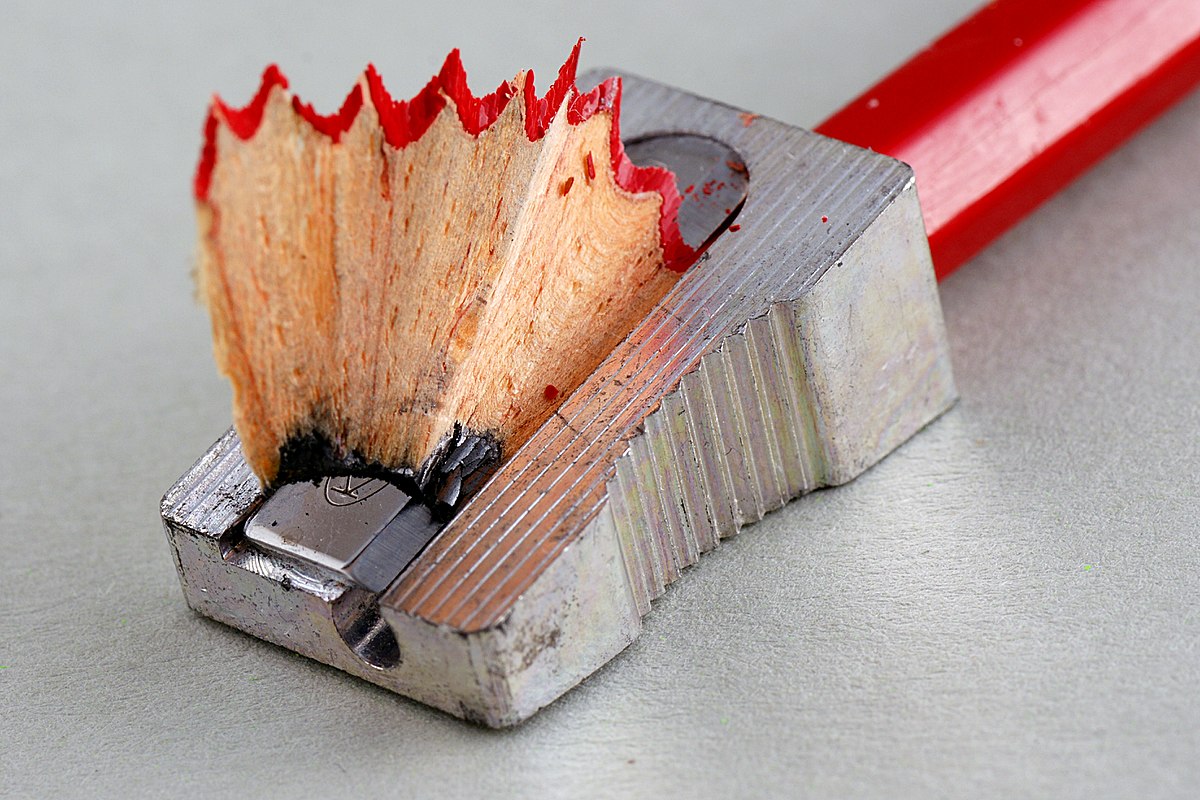Have you ever stopped to think about the unsung hero of your desk, the pencil sharpener? This humble tool, often overlooked and taken for granted, plays a crucial role in keeping our creative and intellectual endeavors on point—literally! Whether you’re an artist, a student, or someone who enjoys the simple pleasure of writing by hand, a pencil sharpener is your trusty sidekick. Let’s dive into the fascinating world of pencil sharpeners and explore their history, varieties, and the magic they bring to our daily lives.
A Brief History of the Pencil Sharpener
Did you know the pencil sharpener has a rich history that dates back to the early 19th century? Before the invention of this handy device, people used knives to sharpen their pencils, which was not only time-consuming but also quite messy. The first pencil sharpener was patented in France in 1828 by Bernard Lassimone, but it was cumbersome and not widely adopted. It wasn’t until 1847 when Therry des Estwaux invented a more practical and efficient version that pencil sharpeners began to gain popularity.
Over the years, pencil sharpeners have evolved significantly. From manual sharpeners to electric and battery-operated models, these tools have become more efficient and user-friendly. Despite technological advancements, the core purpose of the pencil sharpener remains the same: to provide us with a sharp, precise point for our pencils, enabling us to express our thoughts and creativity with ease.
Types of Pencil Sharpeners
Pencil sharpeners come in various shapes and sizes, each designed to meet different needs and preferences. Let’s explore some of the most common types:
1. Manual Pencil Sharpeners
Manual pencil sharpeners are perhaps the most iconic. These come in two main varieties: handheld and wall-mounted. Handheld sharpeners are small, portable, and perfect for on-the-go sharpening. They usually have one or two holes to accommodate different pencil sizes and are incredibly easy to use. Wall-mounted sharpeners, often found in classrooms, offer a bit more stability and leverage, making them ideal for frequent use.
2. Electric Pencil Sharpeners
For those who prefer a bit of modern convenience, electric pencil sharpeners are a fantastic option. These devices are powered by electricity and can quickly and efficiently sharpen your pencils with minimal effort. Simply insert the pencil, and the sharpener does the rest. Electric sharpeners are great for busy environments like offices or studios where time is of the essence.
3. Battery-Operated Pencil Sharpeners
Battery-operated pencil sharpeners offer the best of both worlds. They provide the convenience of an electric sharpener without the need for a power outlet. These sharpeners are portable, making them perfect for artists who work in different locations or for students who need a reliable sharpener in their backpack.
4. Mechanical Pencil Sharpeners
Mechanical pencil sharpeners are a bit of a throwback but still hold a special place in many hearts. These sharpeners, often designed with a crank handle, offer a nostalgic sharpening experience. They are highly efficient and can handle a large volume of pencils, making them ideal for classroom settings or art studios.
The Art of Sharpening: Tips and Tricks
Sharpening a pencil might seem like a straightforward task, but there’s an art to it! Here are some tips and tricks to ensure you get the perfect point every time:
1. Use Gentle Pressure
When using a manual sharpener, apply gentle, consistent pressure. Too much force can break the pencil tip, while too little might not sharpen it adequately. Find a balance that works for you.
2. Rotate the Pencil
For an even sharpen, rotate the pencil in a steady, circular motion. This ensures that the lead is evenly exposed and reduces the risk of breakage.
3. Clean Your Sharpener
Regularly clean your sharpener to remove debris and prevent clogging. This is especially important for electric and mechanical sharpeners. A clean sharpener performs better and extends the life of your pencils.
4. Choose the Right Sharpener
Different pencils require different sharpeners. For colored pencils, which are often softer, use a sharpener designed specifically for them. This prevents the lead from breaking and ensures a smooth, sharp point.
The Pencil Sharpener in Art and Education
Pencil sharpeners play a vital role in both art and education. For artists, a sharp pencil allows for precise lines and detailed work. Whether sketching, shading, or detailing, the right point can make all the difference. Many artists have a preference for a particular type of sharpener and may even carry multiple types to achieve different effects.
In the classroom, pencil sharpeners are indispensable. They keep students’ pencils ready for note-taking, test-taking, and creative projects. A good sharpener ensures that students can focus on their work without the frustration of a dull pencil. Teachers often rely on heavy-duty sharpeners to handle the volume of pencils needing attention throughout the day.
Fun Facts About Pencil Sharpeners
To wrap up our exploration of pencil sharpeners, here are some fun facts that might surprise you:
1. World Record
The largest collection of pencil sharpeners is held by Emilio Arenas from Uruguay, who has over 3,000 unique pencil sharpeners! His collection includes sharpeners from around the world, each with its own story and design.
2. Sharpening Speed
The fastest time to sharpen ten pencils is 1 minute and 11.60 seconds, achieved by Alastair Galpin from New Zealand. This record highlights the skill and speed that can be achieved with a bit of practice.
3. Unique Designs
Pencil sharpeners come in a wide range of creative designs, from animals and vehicles to famous landmarks and cartoon characters. These fun designs make sharpening pencils an enjoyable experience for kids and adults alike.
4. Environmental Impact
Many modern pencil sharpeners are designed with sustainability in mind. Some are made from recycled materials, and others are built to last, reducing the need for frequent replacements. Choosing an eco-friendly sharpener is a small step towards a greener planet.
Conclusion: Celebrating the Pencil Sharpener
Next time you reach for your pencil sharpener, take a moment to appreciate its role in your daily life. This unassuming tool, with its rich history and variety of designs, continues to play a crucial role in our creative and intellectual pursuits. Whether you’re an artist perfecting your craft, a student tackling your studies, or someone who enjoys the simple act of writing by hand, the pencil sharpener is your reliable companion. So, let’s give a nod to this essential tool and keep our pencils sharp and our ideas even sharper!
Frequently Asked Questions About Pencil Sharpeners
1. What are the different types of pencil sharpeners?
There are several types of pencil sharpeners, including manual sharpeners (handheld and wall-mounted), electric sharpeners, battery-operated sharpeners, and mechanical sharpeners. Each type caters to different needs and preferences, from portability to efficiency.
2. How do I choose the right pencil sharpener?
Choosing the right pencil sharpener depends on your specific needs. If you need something portable, a handheld manual sharpener or a battery-operated sharpener might be best. For heavy use in a fixed location, an electric or wall-mounted manual sharpener could be more suitable. Artists may prefer sharpeners designed for colored pencils.
3. How do I clean a pencil sharpener?
Cleaning your pencil sharpener regularly helps maintain its performance. For manual sharpeners, remove the shavings container and empty it frequently. For electric and mechanical sharpeners, follow the manufacturer’s instructions, usually involving unplugging the device and carefully removing debris from the blades.
4. Why do my pencil tips keep breaking?
If your pencil tips keep breaking, it might be due to excessive pressure while sharpening or using a dull blade. Ensure you’re applying gentle, consistent pressure, and check if the sharpener’s blade needs replacing or cleaning. Also, softer pencils, like colored pencils, may require a specialized sharpener to prevent breakage.
5. Can I sharpen colored pencils with a regular pencil sharpener?
While you can use a regular sharpener for colored pencils, it’s better to use a sharpener specifically designed for them. Colored pencils are often softer and more prone to breakage, and a sharpener designed for them can provide a smoother, more precise point without damaging the pencil.
6. Are electric sharpeners better than manual ones?
Electric sharpeners offer convenience and speed, making them ideal for busy environments like offices or classrooms. However, manual sharpeners provide more control and are often more portable. The best choice depends on your personal preferences and where you’ll be using the sharpener.
7. How often should I replace my pencil sharpener?
The frequency of replacing a pencil sharpener depends on its usage and quality. High-quality sharpeners, especially those with replaceable blades, can last for years. Regularly used sharpeners, particularly in school settings, might need replacement or blade sharpening more frequently.
8. Can pencil sharpeners be recycled?
Some pencil sharpeners, particularly those made of metal or certain plastics, can be recycled. Check with your local recycling guidelines to see if your sharpener is eligible. For electronic sharpeners, consider recycling programs for electronic waste to dispose of them responsibly.
9. What should I do if my electric sharpener stops working?
If your electric sharpener stops working, first ensure it’s properly plugged in and there’s no debris blocking the blades. Unplug it and carefully clean out any pencil shavings. If it still doesn’t work, refer to the manufacturer’s troubleshooting guide. Sometimes, the sharpener might need professional repair or replacement.
10. Are there eco-friendly pencil sharpeners?
Yes, there are eco-friendly pencil sharpeners made from recycled or sustainable materials. Some companies also focus on durability to reduce the need for frequent replacements. Choosing an eco-friendly sharpener is a great way to minimize your environmental footprint.
11. Can left-handed people use regular pencil sharpeners?
Most pencil sharpeners are designed for use with either hand. However, some manual sharpeners with specific designs, like certain crank models, might be less comfortable for left-handed users. There are ambidextrous or left-handed specific sharpeners available that can make the sharpening process easier.
12. How do mechanical pencil sharpeners work?
Mechanical pencil sharpeners use a hand-crank mechanism to rotate the pencil against a stationary blade. As you turn the crank, the blade sharpens the pencil evenly. These sharpeners are often mounted to a desk or wall for stability and are known for their efficiency and nostalgic charm.
Understanding these aspects of pencil sharpeners can enhance your sharpening experience, ensuring you always have the perfect point for your creative and academic endeavors.



